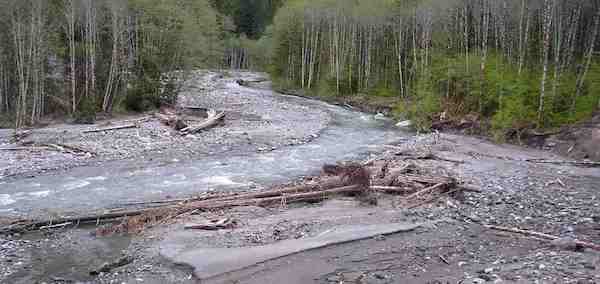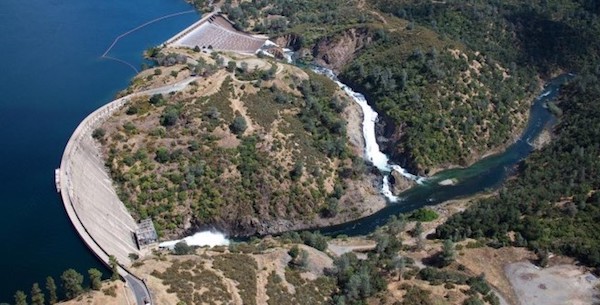Background
Natural River Conditions

- Natural rivers contain a mixture of water, sediment, and biological materials derived from rainfall and landscape processes.
- In most cases, bed and banks are composed of sediment; channel size and shape adjusts to carry the normal load that the river receives over a 1-5 year average interval.
- In-channel features, such as gravel bars, boulders, hydraulic jumps, scour pools, and streamwood jams, are very common in nature.
River Regulation

- Around the world, including the Pacific coast of the North American continent, rivers that once sustained robust anadromous salmonid runs are now regulated. This means that they are blocked by dams and their flows are withdrawn for societal purposes off-channel.
- Regulated rivers are often subjected to a multitude of impacts, not just dams. Concomitant impacts usually include channelization, instream gravel and/or gold mining, deforestation, intensive agriculture, leveeing, straightening, and floodplain isolation.
- In California, there are ~ 1,400 jurisdictional high dams. As a result, 80% of pre-dam upstream habitat is inaccessibl
Impact of Regulation
- Flow regulation and dams change a river's "flow regime". To learn more about flow regimes, watch this video.
- Normally, a flow regime consists of an annual sequence of high and low flows with characteristic features.
- Flow regimes are often characterized using a set of metrics, including ones for flow magnitude, frequency, duration, timing/predictability, and rate of change. These are usually referenced relative to important ecological and geomorphic processes that sustain a river and its ecosystem through time.
- Dams block a river's natural ability to replenish gravel supplies downstream.
- Dams cause long-term degradation to habitats
- Some people advocate for wholesale dam removal, but the water supply and hydroelectric power needs of society will insure the long-term utilization of dams well into the future.
- In some regions of the world more dams are being built to help the environment, because hydropower is viewed as a positive way of combatting anthropogenically driven global warming.
- Overall, dams and flow regulation will continue to exist into the foreseeable future, so we need strategies to protect and maintain regulated rivers.
